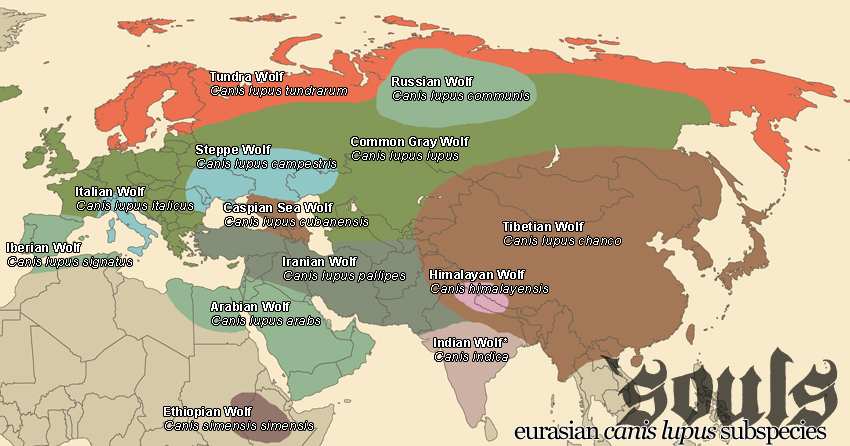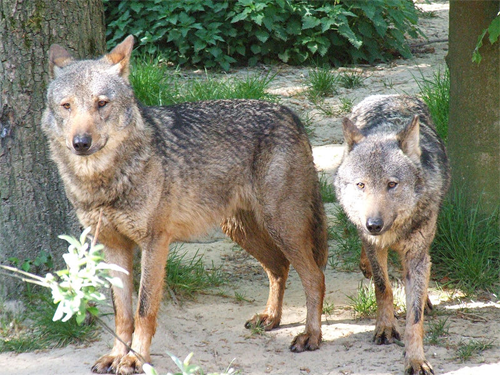Iberian Wolf (''Canis lupus signatus'')
See our RP Guide for more extensive information regarding wolves.
On this page... (hide)
- 1. Common Names
- 2. 'Souls Range
- 3. Appearance
- 4. Other Characteristics
- 4.1 Social Structure
- 4.2 Survival
- 4.3 Luperci
- 5. Citations
1. Common Names
Iberian Wolf
2. 'Souls Range
Inhabits the forest and plains of northern Portugal and northwestern Spain.
3. Appearance
Canis lupus signatus, from commons.wikimedia.org
The Iberian Wolf's coloration is vividly different from most other subspecies of Gray Wolf; their relative isolation on the Iberian peninsula allowed them to develop without influence or interference from other subspecies for quite a long time. They typically boast white stripes along their snouts and distinctive, characteristic black streaks along their front legs. Both of these characteristics are not typically seen in any other subspecies. The Iberian wolf is a smaller, lightly-build subspecies, weighing in around 88 lbs (40 kg).
4. Other Characteristics
4.1 Social Structure
Iberian wolves tend to keep smaller packs than many other species of gray wolf. These packs tend to consist of a dominant pair and one or two children from the previous breeding season; they do not keep to very large groups unless living in a community setting.
4.2 Survival
Prior to 1988, Iberian wolves were quite rare and reduced to a fraction of their prior homeland. Following humanity's destruction, the Iberian Wolf was among the first to begin to adapt to human ways of life and shifting, and so they flourished a great deal. From the Iberian wolves came many ideas and useful adaptations of human technologies; this spread throughout Europe and is making its way steadily across Asia.
4.3 Luperci
Iberian wolves are almost completely Luperci; it is exceedingly rare to find non-Luperci Iberians or even those living feral lifestyles. Even so, they prefer quiet, paired lifestyles to the hustle and bustle of a large group; their former traditions have survived into the present day quite well.
5. Citations


